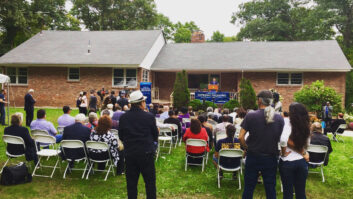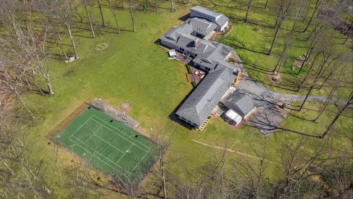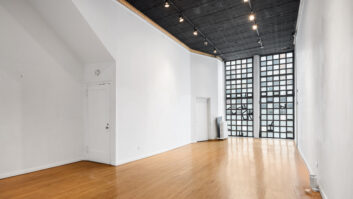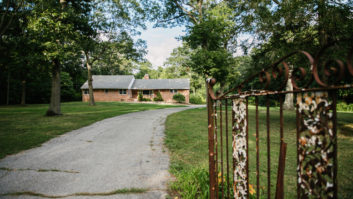Dix Hills, NY (October 15, 2018)—The house where jazz great John Coltrane wrote A Love Supreme and lived with his family through his last years in the mid-1960s fell into extreme disrepair in the ensuing decades, only to be saved in recent times by a grassroots campaign. Leading the charge to preserve and restore the home—and its professional basement studio—is The Friends of the Coltrane Home in Dix Hills. While the group sees renovating the home as its first goal, its broader mission is to use the site for educational outreach, and the restoration of the studio will both bring greater attention to—and build upon—the achievements of Alice Coltrane, a music pioneer in her own right.
“The Coltrane family came together with us in 2006,” said Ron Stein, president of The Friends of the Coltrane Home in Dix Hills. “It was an amazing experience because it was in October and Alice passed just a few months later in January of 2007, but the vision that came out of that centered around one word: Inspiration. Alice said at that time, ‘This place should inspire people of all ages and backgrounds to participate in the joy of making music and the creative process.’”
Taking her words as its mission, the Friends group now harbors a larger goal to become a creative beacon for the surrounding region and the world. “You have to look outward,” said Stein. “It’s only a house, it’s only 2,700 square feet, so our real work as much as it will be inside the house, will be outside the house in the community, reaching into schools. One of the goals of our education program is really to focus on girls and young women, using Alice as a model to get them to engage, get them to be comfortable improvising, comfortable creating, not necessarily behind a microphone and really allow them to become singular forces.”
A Labor of Love Supreme: Saving John Coltrane’s Home Studio
Doing so would not only honor her wishes but also help raise awareness Alice’s pioneering accomplishments in music: “We would be talking about Alice McLeod were it not for John Coltrane—people don’t realize,” said Stein. “You’re under the shadow of somebody as big as John and then you give over your life to making some music, but basically being the single mother of four kids. You have to give up a lot of yourself in that process. But Alice was one of the preeminent piano players of her time—she replaced McCoy Tyner in Coltrane’s classic quartet and she also became, using the gift of the harp to her, one of the world’s greatest jazz harpists ever and an amazing Wurlitzer player. To this day, Carlos Santana talks about her Wurlitzer playing, as does John McLaughlin. She was on Carlos’s album, Illuminations, and she just blew everyone away.”
Telling her story isn’t merely a walk through the past, however—it’s directly relatable to today, he noted: “Alice is so important now, because we are talking about women, and empowering girls and young women, and Alice is one of the few women who made it on the bandstand, not behind the microphone.”
While plans to restore the studio are shaping up, it’s just the latest in an ongoing effort to save the house. While the Friends group was part of a grassroots movement that saved the home from demolition in 2005, the last 13 years have been spent trying to keep the house standing while saving everything possible from the mold-infested interior. A new roof and freshly planted flowers now make the exterior presentable, but the insides remain a far cry from the house that the Coltranes called home. After John died in 1967, Alice recorded five albums in the basement studio as both the artist and producer, before selling the property in 1973.
In the decades that followed, the house passed through owners and was rented out to college students annually for 20 years. Eventually sold to a local developer, it was boarded up for years, earmarked for demolition to be replaced with three separate houses across the land parcel. Ironically, because the landlords were generally absent, the interior didn’t change much. The kitchen and its appliances were never updated. The rooms, painted to identify with various Hindu chakras, stayed the same colors as Alice originally painted them (the master bedroom’s carpet—purple, the highest chakra—also remains surprisingly well intact). As Stein pointed out, “The home is almost a snapshot of the home that the Coltranes lived in so many years ago.”
Today, most of the house’s guts have been removed. “We’ve had to take everything that was porous off the walls because the mold was so rampant,” said Stein. “We carefully documented every single square inch of this house, and the plan is to rebuild most of it the way it was, but taking advantage of modern building technologies.” That, of course, will include the studio.
Friends of the Coltrane Home in Dix Hills • www.thecoltranehome.org







